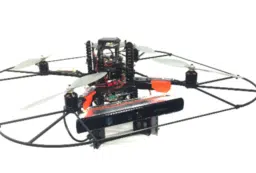Soil development at snails’ pace: a pioneering study of soil formation in north Queensland shows that it takes 3000 years to form barely a millimetre of soil from the rocks beneath – too little, too long….. Too late!
A pioneering study of soil formation carried out by Canberra scientist, Dr Brad Pillans, challenges the view that soils are a renewable resource in the context of sustainable agriculture. In one of the first Australian studies to focus on soil production instead of soil erosion, Dr Pillans concludes that almost no soil has been created in the 200 years since European settlement. In fact his study shows that soils are created at a proverbial snail’s pace, with a bare millimetre of soil forming in 3000 years.
Soils are a vital resource for agriculture, and yet every year on farms all around Australia that resource is depleted through surface erosion by wind and water. If the rate of surface erosion is consistently greater than the rate of soil formation from the rocks beneath, then soil depth decreases, eventually culminating in complete soil loss. Dr Pillans’ study provides the first Australian data on long-term soil formation rates.
So how can we measure the rate of soil creation from rocks?
Dr Pillans adopted a geological approach. In the Charters Towers-Hughenden area of north Queensland volcanic eruptions produced a series of basalt lava flows with ages (determined by isotopic dating methods) ranging from 6 million to as young as 13 thousand years old. Study sites were located on the flattest parts of flows, where surface erosion has been negligible. By studying soils on flows of different ages, the long-term history and rate of soil formation could be determined. The astonishing result was just how slow soil formation could be – snail’s pace!
The inescapable conclusion is that natural rates of soil formation from rock are so slow, that accelerated soil erosion associated with farming is removing soil at rates far exceeding those of soil creation. “It’s like a bank account, and we are rapidly going into overdraft”, says Dr Pillans.
Dr Pillans will be conducting more field research in north Queensland in late June/early July and would be happy to speak to media people “in the field”.





 Fresh Science is on hold for 2022. We will be back in 2023.
Fresh Science is on hold for 2022. We will be back in 2023.